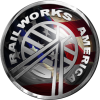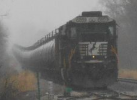 by MontanaRails » Tue Jan 01, 2013 11:03 pm
by MontanaRails » Tue Jan 01, 2013 11:03 pm
I agree with Buzz456. I think, if there isn't an additional headwind, and on a flat stretch of track, its probably pretty accurate. From the manual I have (SD50 - might have been a C&NW modified EMD manual), it says:
3-12
HANDLING LIGHT LOCOMOTIVES
With the engine started and placed "on-the-line" and the preceding inspections and precautions completed, the locomotive is handled as follows:
1. Place the engine run switch and generator field switch in on (up) position.
2. Place headlight and other lights on as needed (per company policy).
3. Insert reverser handle and move it to the desired direction of travel, either forward or reverse.
4. Release locomotive air brakes.
5. Open throttle to position No. 1, 2, or 3 as needed to move locomotive at desired speed.
NOTE
Locomotive response to throttle movement is almost immediate. There is little delay in power buildup.
NOTE
Locomotives roll freely and care should be used in judging speed and acceleration!
6. Throttle should be in IDLE before coming to a dead stop.
7. Reverser handle should be moved to change direction of travel only when locomotive is completely stopped.
Then further down it says:
3-18
ACCELERATING A TRAIN
After the train has been started, the throttle can be advanced as rapidly as desired to accelerate the train. The speed with which the throttle is advanced depends upon demands of the schedule and the type of locomotive and train involved. In general, however, advancing the throttle one notch at a time is desired to prevent slipping and undue shock stresses.
NOTE
Light or multiple unit locomotive sets will quickly reach track speed at low power settings. Use caution to avoid exceeding track speed limits.
The load indicating meter provides the best guide for throttle handling when accelerating a train. By observing this meter it will be noted that the pointer moves toward the right (increased amperage) as the throttle is advanced. As soon as the increased power is absorbed, the meter pointer begins moving toward the left. At that time, the throttle may again be advanced. Thus for maximum acceleration without slipping, the throttle should be advanced one notch each time the meter pointer begins moving toward the left until full power is reached in throttle position No. 8. A short time operation nameplate is located directly beneath the load current indicating meter.




